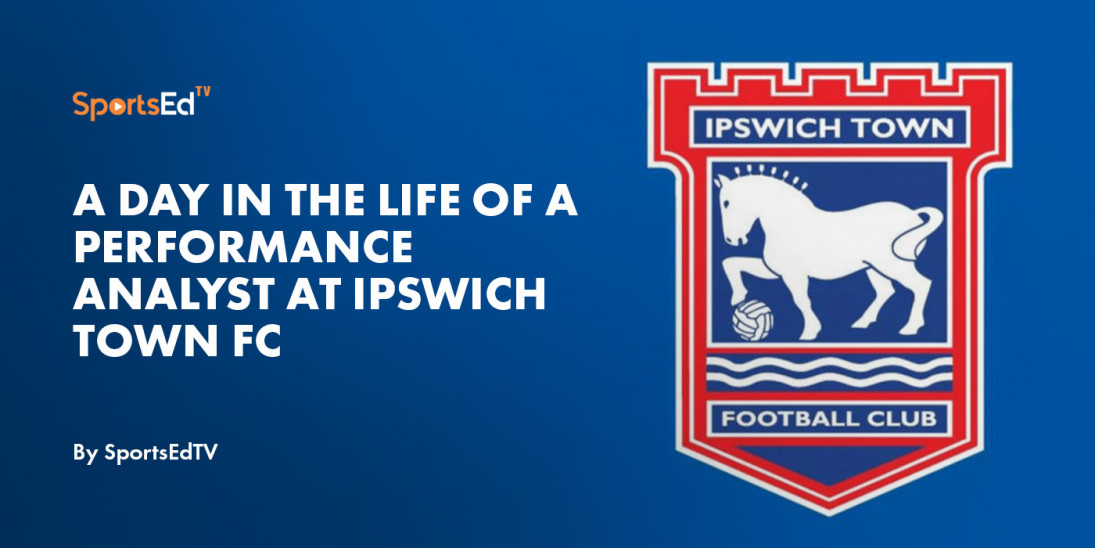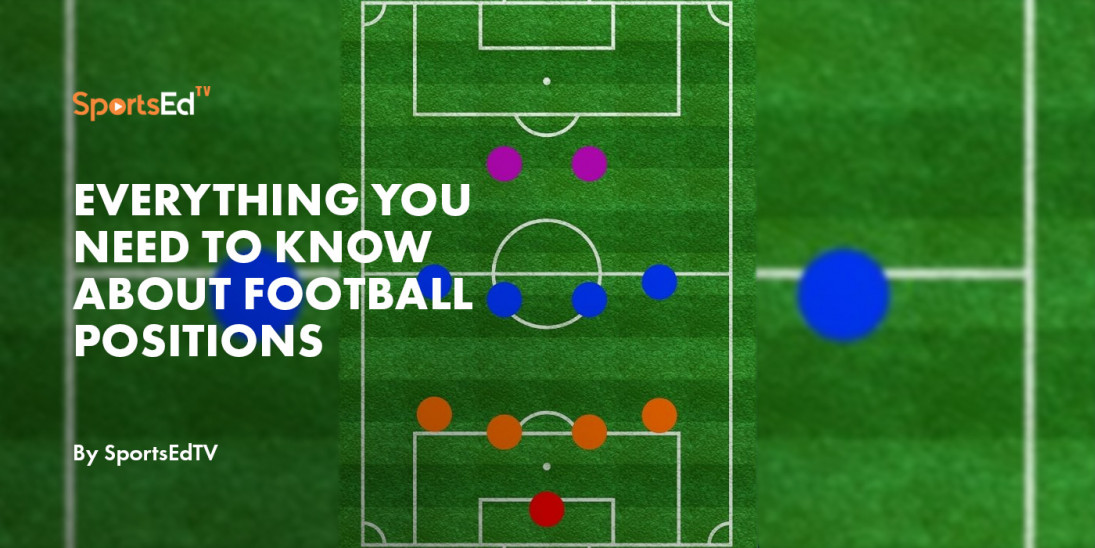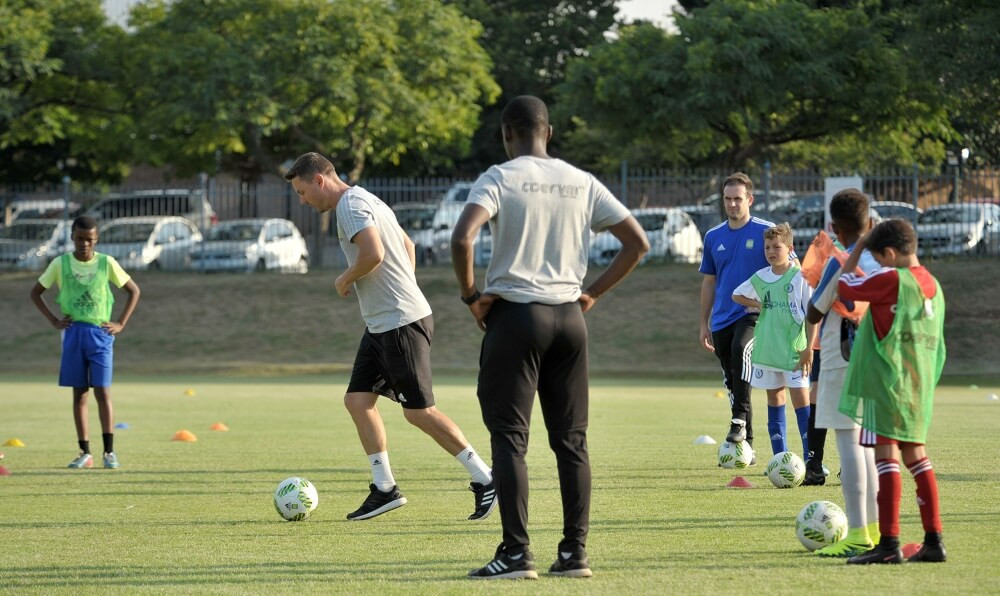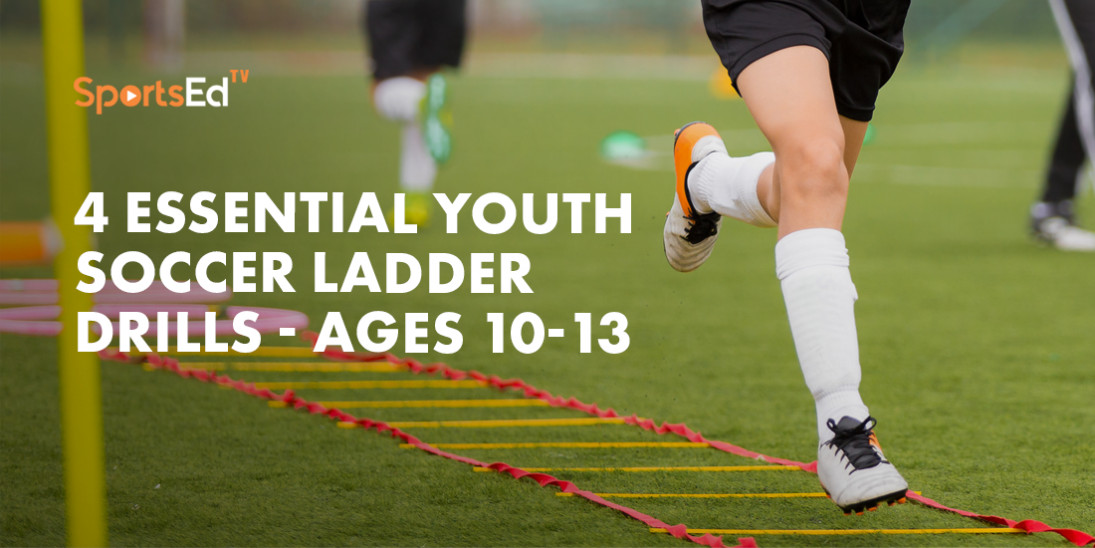Soccer
Welcome and thanks for visiting...

A Day In The Life of a Performance Analyst at Ipswich Town FC

SportsEdTV Soccer is committed to bringing athletes, coaches, and parents pro-level Soccer education videos for FREE. All levels, anywhere, anytime. Check out our full instructional library and sign up to join our Soccer community.
Thomas Adams, a performance analyst at Ipswich Town FC, discusses his role in the professional club.
A First-hand Experience of Working as a Performance Analyst at Ipswich Town F.C.
Introduction
Allow me to introduce myself; I’m Tom, a 20-year-old student studying sport and exercise science at the University of Essex. I’m currently in my 3rd year of studies working at professional football club Ipswich Town as part of their performance analysis team. Working in professional sports has always been a career ambition of mine, whether in a strength and conditioning, health and nutrition, analysis or rehabilitation field. When this opportunity came up, I was ecstatic! The experience that I can gain working at this club is invaluable and I’m hoping that in sharing some of my experiences I can help give some insight to those who have similar aspirations to mine.
Ipswich are in the 3rd tier of professional English football known as League One. The club are aiming for promotion to the Championship (England’s 2nd division) this season with manager Paul Lambert attempting to guide them there. Currently Ipswich are sitting in 7th place, and with five points between them and 2nd it’s shaping up to be an intense end to the season.
My Role, Routine and Schedule at Ipswich
As I mentioned before, I work as part of a team in the sport analysis sector of the club. I am scheduled to work a minimum of three training days a week, and since there are five of us that means that the calendar can be quite flexible as only two are needed on one day. This is very fortunate as normally football clubs will only have two or even just one member of staff doing the analysis. First team training begins at around 10:00am, so in order to be set up properly for their arrival I aim to arrive at the training ground at 8:00am sharp. This allows me to get a number of jobs done so that when the players arrive, they can collect their kits and head out to train.
In short, the role of a performance analyst at Ipswich is to prepare the players recording devices and kits for training, collect their data and file a report representing the day's data to send to the senior members of staff. This may seem relatively straight forward, however there are a number of other jobs we are required to do in order for the day to run smoothly. These include washing and drying training vests, sanitising GPS devices, providing hydration for training and setting up (some) drills to name a few. These extra tasks change what may seem a straightforward day's work into quite a challenge at times, hence why we always set up early, manage our time and focus on the jobs that need to be done. Those would be my three main points of advice to anyone who is looking to work at a sports team and is just starting out. Over time, managing the jobs becomes less stressful and the work becomes very enjoyable and rewarding.
What I have discovered at my time so far at Ipswich is that nothing in the schedule is ever set in stone. Last minute cancelations, decisions and changes mean you really need to be proactive and prepared. For example, there have been plenty of times where I have received a call into training at early hours on my days off. The urge to stay in bed is strong but commitment is everything in football, you have to be prepared and taking the day off in that scenario is simply not an option.
What’s expected of me
In any job punctuality, commitment and professionalism are extremely important, and football is no exception. I have to be honest that when starting out I did feel intimidated; I kept my head down a lot and only spoke when I needed to. Despite the nerves of this completely new experience I found that I warmed to it quite quickly and learnt to adapt to working in the football environment. It’s all about judging the atmosphere, balancing engagement and most importantly staying professional at all times. For example, there’s a huge difference when I speak to players compared to when I speak to a senior member of staff. With the players it is more appropriate to exchange jokes and create small talk than it is with staff, as senior staff conversations will almost always be related to work. This may seem straightforward, but the right approach also depends on the situation. When the atmosphere at the ground is intense, it is not always appropriate to joke around with players and staff. When on a good run of form, the players and coaches are relaxed and positive, but if this isn’t the case then tensions can be high and there is a focus on getting back to winning ways. In that case, distractions from this focus will be unwelcomed by both staff and players.
Every day, there is an expectation put upon our analysis team by the club to deliver reports on the day's training to the senior staff that very same day. This is the standard we have to meet, along with the data being 100% accurate and interpretable. If a deadline is missed however it is not the end of the world, but is not ideal as the data we provide can be extremely important for time-sensitive decisions such as squad selection.

Data Collection
There are four main pieces of equipment that we are responsible for when it comes to data collection: The GPS vests, GPS units, the beacon and the iPad. The vests and units are relatively straightforward and there is likely to be a similar set up at most professional sports clubs. Like I mentioned before, one of our jobs when we arrive is to make sure that these vests and units are out and ready for the players to collect before training starts. Each player has their own unit and vest. Once the players are warmed up and are ready for training, we use the beacon to create a personal hotspot which allows the iPad to track and record the data that the GPS units pick up. So, the beacon is what links the three together and without it our job would be ten times harder.
When training begins, we normally assign jobs so that one person is focusing on the iPad and the other is focusing on helping out with drills. The iPad records all the data the players pick up during the session, left unattended it would pick up data that we don’t need. To avoid picking up pointless data one of us will clip the beginning and end of each drill as it happens. This makes life so much easier when it comes to creating the reports. Another reason we need to pay attention to what’s happening on the iPad is in case a player's GPS unit stops functioning or isn’t switched on. If that happens, we know about it straight away and this issue can be fixed.
We get a live feed of the players’ data on the iPad which shows a number of different metrics. The main ones we look at are total distance, average distance per minute, high speed running (Zone 5), sprint distance (Zone 6), number of accelerations and decelerations, high metabolic load distance and finally max speed. We have these metrics on screen in case a coach or player asks us to have a look at someone’s data to check if they’re reaching a target. This is especially important for players who are going through rehabilitation as the data we provide is what dictates whether they are on track to returning to first team training or not.
Once training is over, we stop the recording and help to pack up cones, goals, posts etc. We head back to the ground and collect the players GPS units which are ready for download.
This is what an ideal training day should be like, although this is rarely how simple the day goes. There are a number of problems and things that can go wrong to slow us down. For example, any one of the pieces of equipment we use can decide not to work for whatever reason, rain can cause the touch screen on the iPad to stop functioning or a player can simply forget to even collect their unit. For each problem though, we do have solutions, but it often involves averaging out data and using a pen and paper to write down the timings of each drill. As you can imagine this is incredibly tedious, often causing delays and resulting in us staying until 6:00pm just to get the reports done. What I’ve learnt from this is that there is always a way to get the job done and you have to be prepared to improvise when things don’t go to plan.
Reports
There are three types of reports that we create for the managers and coaches to look at: training, rehabilitation and weekly reports. The most common is the standard training report which is submitted each day the players train. Rehab reports are of the exact same format but are created separately, and a weekly report is essentially a summarisation of the week’s training.
Creating reports is a straightforward but occasionally tedious process which is best explained if I break it down into steps. The first step is downloading the data from the GPS units. This is done by plugging them into a charging dock which is connected to the laptop where the database is saved. Once downloaded, we need to check and double check the data for any outlying figures and clip each training drill for that day down to the exact second it started and finished. Next, we convert the data onto a spreadsheet where we check it once more before pasting it into the database. It’s also at this stage where we can make corrections to the data if needed. We try our best to spot any mistakes before uploading the data to the database because if we find a mistake too late then, in most cases, we will have to delete the data and start from step one again.
After download, it comes to creating the reports which is in my opinion the easiest part once you learn how to do it. If you were expecting a highly detailed written piece on each player's statistics for the day then you’ll be surprised! Our design for reports is heavily based on visuals and figures to make it as easy to interpret as possible. We use an Excel spreadsheet that has been set up to do most of our job for us, we simply plug in the data we have converted, and the graphs, averages and stats are formed for us. All we need to do after that is make sure each graph is formatted properly (readable and presentable). The figure above shows the style of graph we use to represent our data. This same style is used for each metric we show in our reports.

How our data is used
It is often questioned how much of an effect the data we provide has on the decisions of the manager. My honest answer is that I simply don’t know, but what I can say is how this data can be used to make decisions. The first thing to know is that the numbers don’t lie, meaning that if you’re a player who has been slacking in training, the manager is going to know. Average distance per minute and total distance are the metrics that best represent whether a player has taken a back seat in training sessions. Although this may not be a huge factor that contributes to team selection, it may encourage coaches to take extra measures to ensure those players get their total distance to where it should be in future sessions. Additionally, the coaches may use this data to plan future training sessions. Our reports provide a percentage figure for intensity and volume and the coaches could use this data so that they know which drills work the players hard and which don’t. As a result, they can plan ahead so that training before a match day involves the less intense drills.
Another way this data is useful to the coaches is so that they can closely monitor targets that a player may be trying to reach. This is common for players who are going through rehabilitation and are working to get back to fitness. For example, the rehab reports make the targets measurable and the coaches can easily track the player’s progress.
The majority of the time we send the reports off and the coaches do the rest, but occasionally we do get opportunities to give our opinions on the player’s data. We are the ones who are constantly seeing the numbers and stats week in and week out after all. There was a period where we were noticing a lack of sprint distance and number of sprints in the players data. This was resulting in training sessions recording a low intensity on our reports. When it was questioned by the coaches why the intensity was a low percentage, we advised that the players needed to record more sprint distance to increase it to better replicate a match scenario.
Summary
I want to conclude by talking a bit about how my experience working at Ipswich has helped me and will benefit my career in the future. Not only has my confidence risen massively, but my proactiveness and professionalism too. Being forced to adapt to an ever-changing routine, and communicating with people of serious importance, are aspects that I feel prepares you for anything and I will take these skills with me throughout my career. More obviously and most importantly, I now know what it’s like and how to work as a performance analyst at a professional football club. That experience is highly sought after by employers and I count myself very lucky to have been given the opportunity.
Secondly, I just want to give a final few pieces of advice to anyone who is looking to start working in a similar role in a professional sporting environment. In terms of getting used to the environment the best advice I can give is be yourself and give it time. Don’t try to act in a certain way to impress players or coaches. Instead, let your professionalism and hard work show you’re capable of doing the job. You’ll form relationships with staff, coaches and players along the way. When getting used to the working routine all I can say is – be prepared! I hear people say that the routine in football is harsh and unfair, but I say that it's only that way if you’re unprepared. Stay organised and plan ahead.
The role of performance analysis is something that I feel will continue to grow in importance in the future of football. Having had the experience, I believe that the statistics and figures we provide integrate themselves into a bigger picture which has a big effect on the club. It is often the marginal gains, tweaks and changes which can lead to the biggest success and I think that is the best way to describe the role of a performance analyst. The role may seem insignificant as a whole, but in reality it is helping the club gun for promotion, and perhaps one day, return to the promised land of the EPL once more.
Written by Thomas Adams




